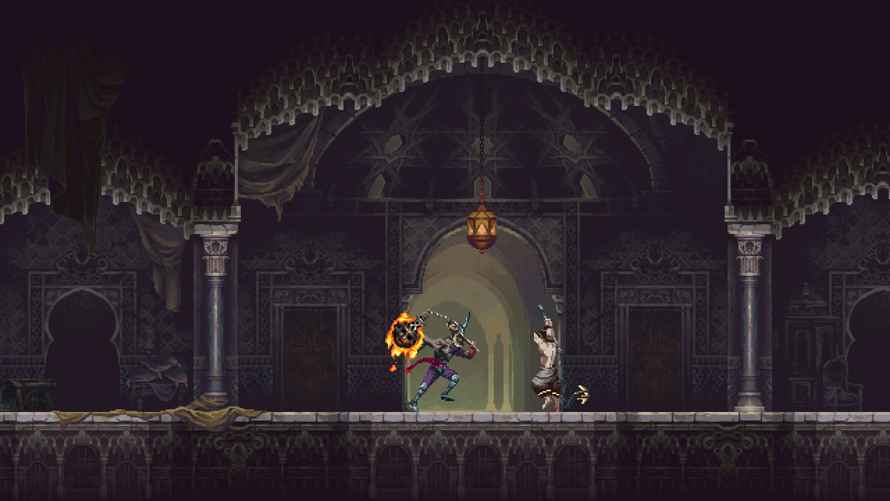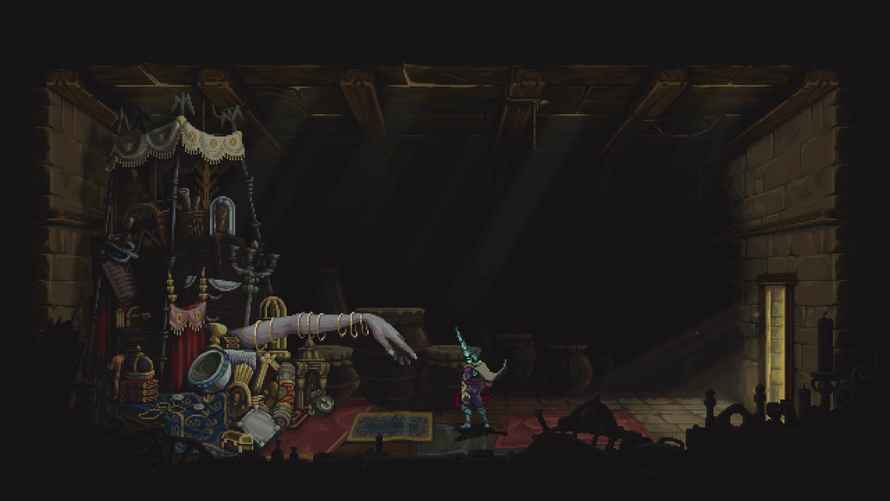Blasphemous 2 Review
I’m glad I’m not a taxonomist, trying to distinguish, for example, one species of bug from another. Oh, that one has three white dots on its wings, but this other one has two red dots. I thought of that while playing Blasphemous 2. Is it a Soulslike? A Metroidvania? A puzzle-platformer? Ultimately it doesn’t matter what you call it. As long as you play it, and the game is fun.
Things Change
Actually, that taxonomic discussion might not be irrelevant. 2019’s Blasphemous was a 2D action game very much indebted to the Soulslike genre, with a few unique mechanics folded in. Still, the brutal difficulty and dark, gothic setting drenched in religious imagery felt very much indebted to FromSoftware. At its core, Blasphemous 2 retains most of the first game’s fundamentals.
For the sequel, Spanish developer The Game Kitchen pushed the design closer to classic Metroidvanias. There are many more timing-based platforming puzzles, and levels are more intricately designed. Many areas or even some progression is locked behind having the ability to use specific weapons and their attacks or powers. Players will return to areas, equipped with new weapons or abilities, more than in the first game.
For example, a walled-off treasure room might need the player to hit a suspended bell that opens a door. Only one weapon — a heavy ball and chain, flail-type weapon called the Censer of Flame — can manage the task. Players who have not yet found or equipped that weapon will need to revisit the area later in the game.

The original Blasphemous had one weapon, a blade called Mea Culpa. The sequel has three, any of which can be chosen from the start. The Praying Blade is closest to Mea Culpa. It’s in the middle ground between heavy damage and speed. The Rapier and Dagger are the fast, light damage weapons for the rogue-leaning player. However, while one weapon or the other will probably fit a player’s style, all three become available during the game. And they’ll be important keys to progress.
Weapons are Just the Start
As in Blasphemous, your weapons and their special abilities for the heart of combat, but most of the first game’s supporting systems return. Collectible rosary beads are stackable and provide stat boosts in defense, offense, and non-combat areas like healing. Relics provide passive boosts and are particularly important to the game’s more demanding platforming. For instance, one of the Relics reveals hidden platforms that make formerly impossible progress much more likely.
While systems for buffing characters, upgrading weapons, and adding special and passive abilities are all common to RPGs, Blasphemous 2 does a good job of splitting the difference between too many mechanics, currencies, or collectibles and so few that the game feels shallow. Just like in the first game, dying doesn’t result in a loss of currency, but each death adds a stain to your soul and reduces your ability to survive. Retrieving your essence or visiting a priest for absolution restores your soul to squeaky-clean perfection.
Father, Forgive Me
Because Blasphemous 2 is so focused on exploration, platforming, and precisely timed combat, the controls need to be darn near perfect. They’re very good. Jumping isn’t so finicky that it walls off fun from the less adept. However, the first few hours of Blasphemous 2 can be frustrating, as your character is weak and his skills are less than ideal. Memorizing enemy timing and moves becomes the only viable technique, and knowing how to exploit weaknesses with specific weapons. Jumping too near a ledge always results in a climbing animation. It’s an annoyance from the first game that I wish had been fixed.

A good Soulslike — especially those by FromSoftware — hits the sweet spot between challenge and reward, doling out enough satisfaction to make the demanding parts worth it. Blasphemous 2 definitely skews toward the challenge. What I’m trying to say is that it’s a damn difficult game. Those casual players hoping for a forgiving and accessible experience should move along. Yes, nearly every enemy has a readable pattern. But knowing what to do and actually hitting the timing perfectly is not for the faint of heart or the slow of reflexes.
Just like the original Blasphemous, the sequel looks great, with detailed, moody, and artistic visuals and character designs steeped in Catholic iconography. This extends to the story, a fairly inscrutable narrative that propels the player along. The bosses are terrifying and terrifyingly difficult. The rank-and-file enemies have a lot of variety, too, and the music perfectly complements the action and art. The paintings that carry important story moments are evocative.
No Pain, No Gain
The talk about game difficulty is a lot of nonsense. Games don’t need an easy mode. They need to onramp players in a way that makes sense, then treat them fairly. Make the game as difficult as you want, but make sure the player has a path to competence and success. Not every game is for every player.

Blasphemous 2 is a very challenging game but by and large, it’s a fair one, too. Timing, persistence, and the ability to read patterns — not brute force — are the only keys to making it out the other side. In terms of level design and weapon variety, it’s a step forward from the first game. If you enjoyed Blasphemous, the sequel will feel both familiar and surprising in equal measure.
***PS5 code provided by the publisher for review***
The Good
- Challenging 2D action
- Dark, moody art
- Interesting level design
- Excellent music
The Bad
- Very difficult
- Lore heavy story
- Some minor platforming issues

